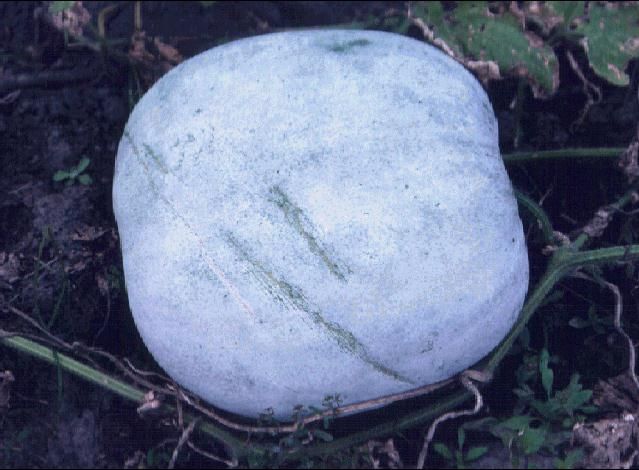Gourd, Wax—Benincasa hispida (Thunb.) Cogn.1
The wax gourd has been grown commercially on oriental vegetable farms in south Florida and in trial gardens around the state. It is also known as white gourd, white pumpkin, tallow gourd, ash gourd, gourd melon, winter melon, Chinese watermelon, and Chinese preserving melon.

Credit: James M. Stephens
Description
The pumpkin-like annual vine has thick, furrowed stems with coarse hairs, tendrils, and somewhat triangular, irregularly lobed leaves up to 10 inches long. Flowers are golden yellow, 2½ to 3½ inches wide. Female flowers are borne on ¾ to 1½ inch long hairy stalks, while stalks bearing male flowers are 2 to 6 inches long.
The watermelon-shaped fruits, hairy when young, range from oblong to round and may reach 4 feet in length and 2 feet in diameter. They may weigh as much as 30 to 40 pounds, although 15 to 20 pounds is more common. The thin, tough, green skin is coated with a layer of white chalky wax. In some varieties, pale gray, minute hairs are present even on full-grown fruit. The thick flesh is white, crisp, juicy, and mild. Seeds are oval, flat, and light brown.
Culture
Grow wax gourds like watermelons. Seeds may be planted to produce three crops annually in South Florida (seeded in July, December, and March) or two crops in the rest of Florida (planted March and July).
Use
The gourd is preferred as a cooked vegetable, either boiled alone, boiled with meat, or included in a variety of dishes. Also, it is used raw like sliced cucumbers. Wax gourds keep for 2 to 6 months or more if stored in a cool dry place.


